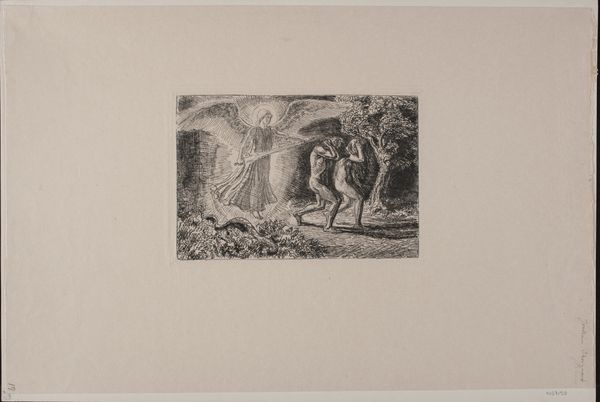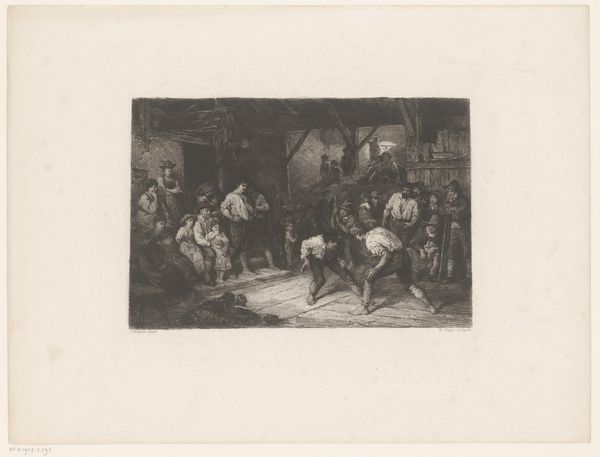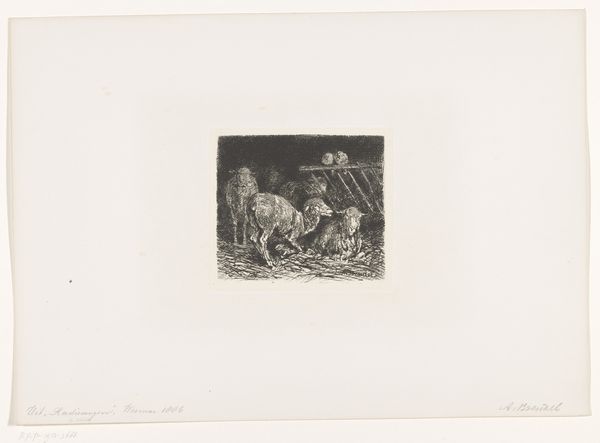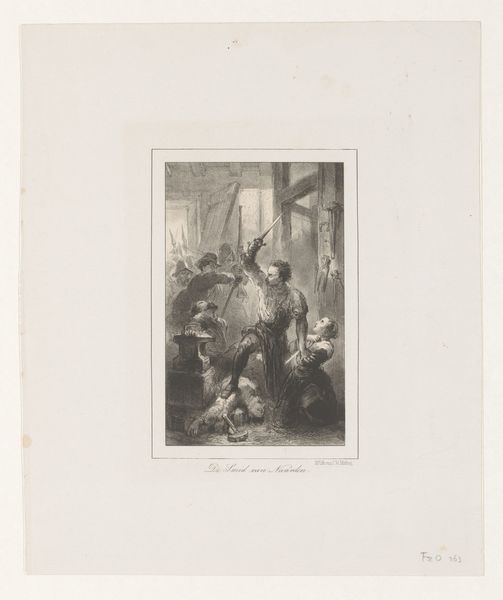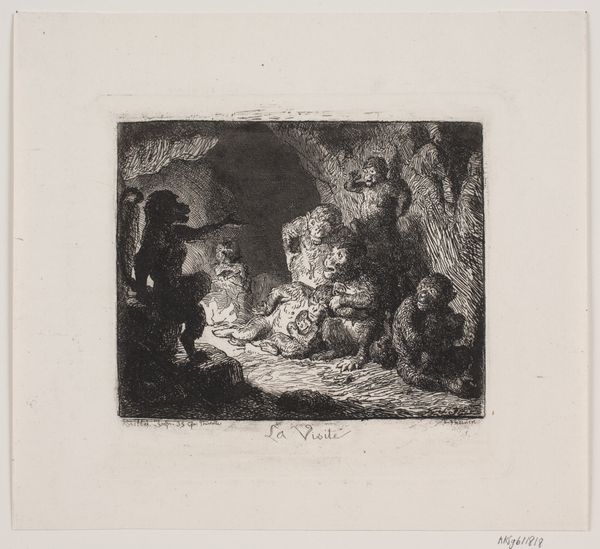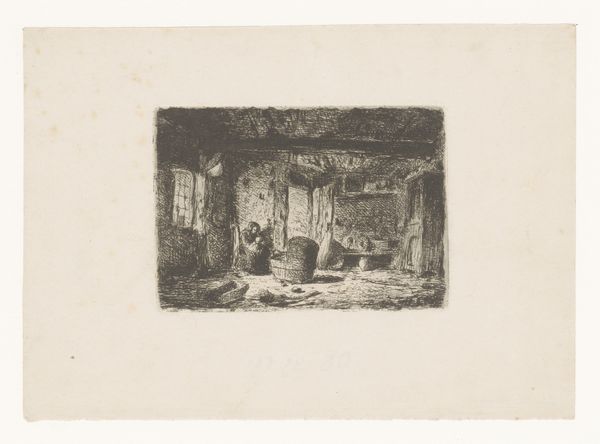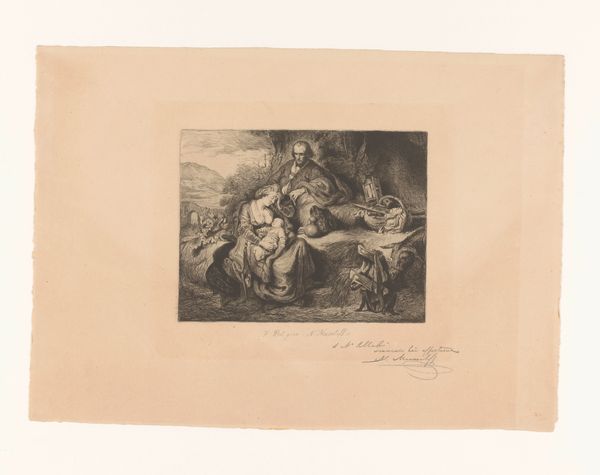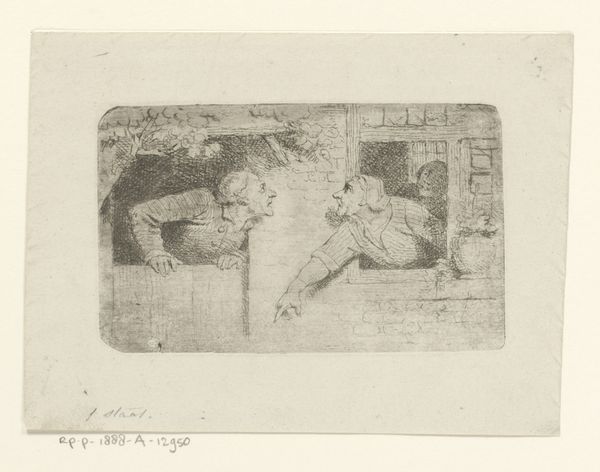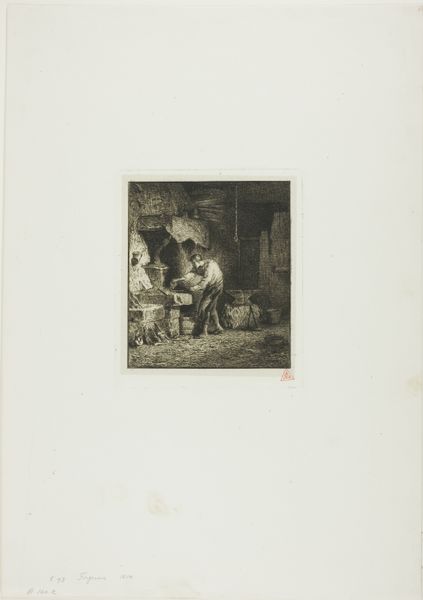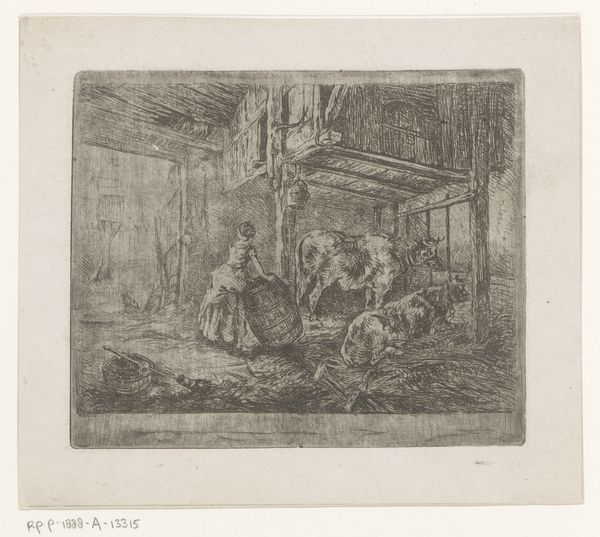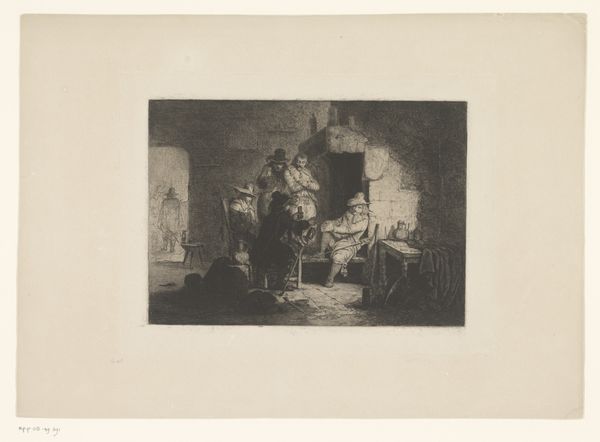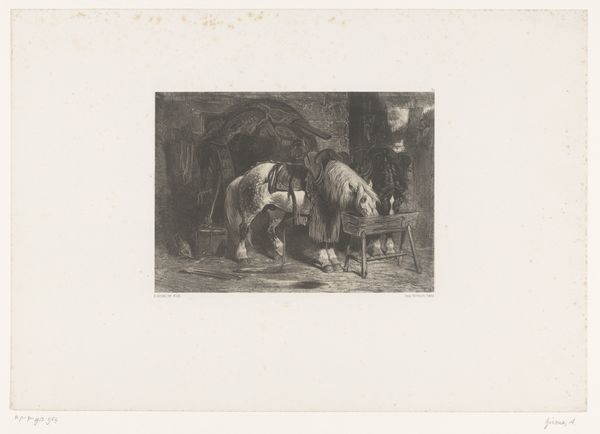
print, etching
#
animal
# print
#
etching
#
figuration
#
realism
Dimensions: height 120 mm, width 167 mm
Copyright: Rijks Museum: Open Domain
Editor: We’re looking at "Group of Monkeys in an Enclosure," an etching by Armand Heins from 1887. There’s this heavy darkness about it, a stillness… almost like a secret being shared amongst them. What’s your take? Curator: That stillness, that's precisely it! The artist has captured a potent sense of being watched, of observation. It feels like looking into a mirror reflecting our own primal selves, doesn’t it? What do you make of their expressions? Are they mournful? Contemplative? Bored? Editor: I think I see a little bit of all of that, but maybe more like… resignation? Like they're aware of their captivity. Is it maybe trying to say something about how we treat animals, or even each other? Curator: Precisely! The gaze directed back at us makes me feel quite uneasy. Think of zoos during this period; places of spectacle, but also scientific inquiry. Does Heins invite us to feel sympathy? Condemnation? Consider also the technique—etching, with its dense web of lines, adds to the feeling of being caught, trapped. It's a world rendered in shadows, not so different from our own internal landscapes, perhaps? Editor: That makes the dark tone feel even more significant. It's not just the enclosure they're in; it's something internal too. I initially thought of the realism style, but there’s something much deeper, that darkness you mentioned is hard to ignore now. Curator: Indeed! It transforms the expected ‘realism’ into something altogether more poignant. Perhaps it's an invitation to acknowledge and embrace the shadowier, more difficult parts of our own existence as humans – after all, what's in a cage? Are we free from them, or trapped by our roles in society, the way we see others and ourselves. Editor: This has given me so much to think about. It's more than just a group of monkeys; it is more of a statement. Curator: Exactly! It invites you to ask uncomfortable, important questions and to embrace them. It reminds us that, sometimes, the most profound insights are found in the quietest of reflections.
Comments
No comments
Be the first to comment and join the conversation on the ultimate creative platform.
